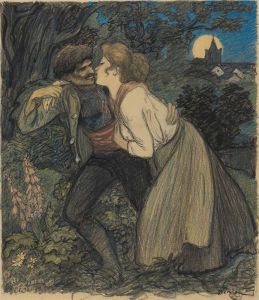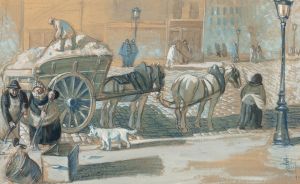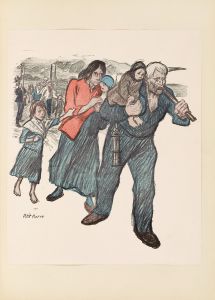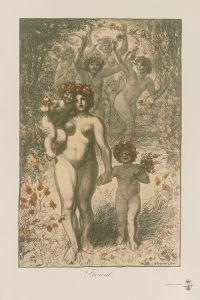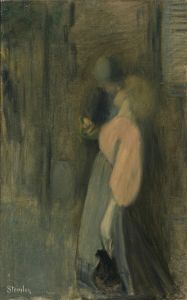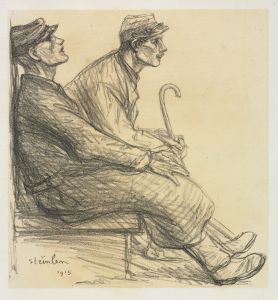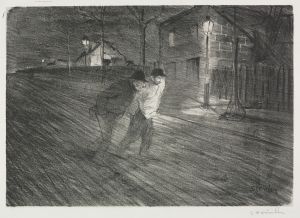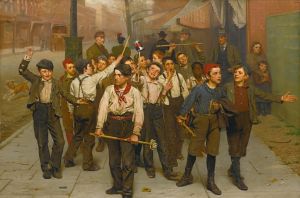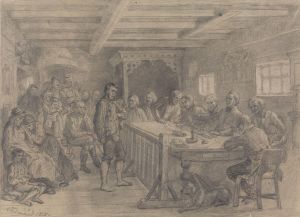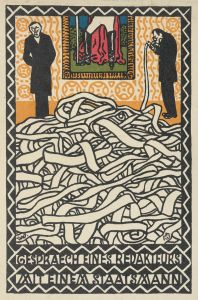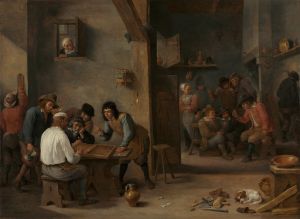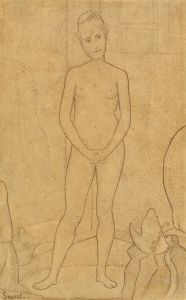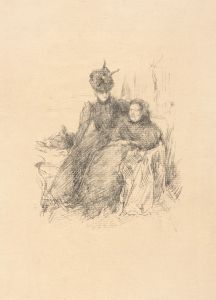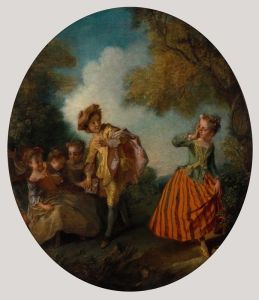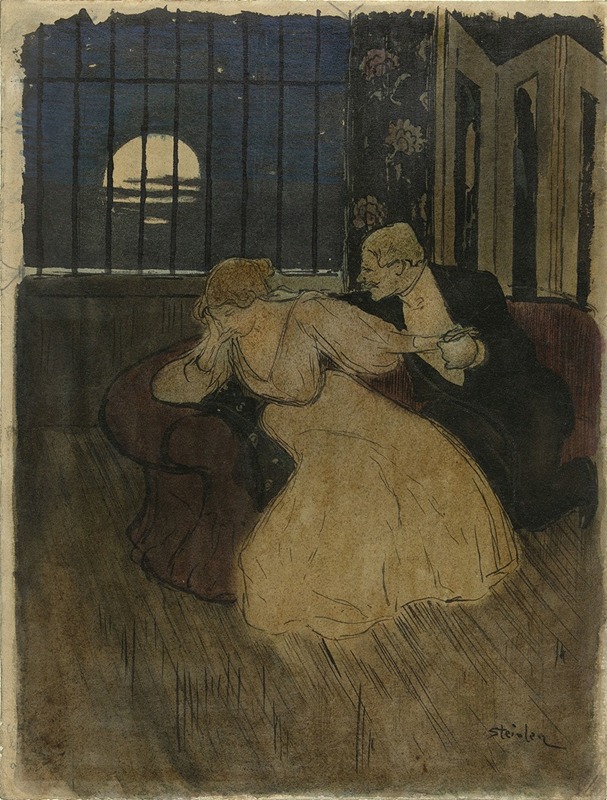
Heer in rok tracht een twijfelende dame op een sofa te overreden
A hand-painted replica of Théophile Alexandre Steinlen’s masterpiece Heer in rok tracht een twijfelende dame op een sofa te overreden, meticulously crafted by professional artists to capture the true essence of the original. Each piece is created with museum-quality canvas and rare mineral pigments, carefully painted by experienced artists with delicate brushstrokes and rich, layered colors to perfectly recreate the texture of the original artwork. Unlike machine-printed reproductions, this hand-painted version brings the painting to life, infused with the artist’s emotions and skill in every stroke. Whether for personal collection or home decoration, it instantly elevates the artistic atmosphere of any space.
Théophile Alexandre Steinlen was a Swiss-born French Art Nouveau painter and printmaker, renowned for his depictions of Parisian life and his contributions to the poster art movement. He was born on November 10, 1859, in Lausanne, Switzerland, and later moved to Paris, where he became an integral part of the Montmartre artistic community. Steinlen is best known for his posters, illustrations, and paintings that capture the essence of late 19th and early 20th-century Paris.
One of Steinlen's works, "Heer in rok tracht een twijfelende dame op een sofa te overreden," reflects his keen observation of social interactions and human emotions. The title, translated from Dutch, means "A Gentleman in a Tailcoat Tries to Persuade a Hesitant Lady on a Sofa." This painting exemplifies Steinlen's ability to portray nuanced social dynamics and the subtleties of human behavior.
Steinlen's art often depicted scenes of everyday life, with a particular focus on the working class, women, and domestic animals. His works are characterized by their realism and attention to detail, capturing the mood and atmosphere of the time. In "Heer in rok tracht een twijfelende dame op een sofa te overreden," Steinlen employs his typical style to explore themes of persuasion, hesitation, and social interaction.
The composition of the painting is intimate, drawing the viewer into the private moment shared between the two figures. The gentleman, dressed in a formal tailcoat, is depicted in a posture of persuasion, suggesting a conversation or negotiation taking place. The lady, seated on a sofa, appears hesitant, her body language conveying a sense of contemplation or reluctance. Steinlen's use of color and light enhances the emotional tension in the scene, highlighting the contrast between the figures and their surroundings.
Steinlen's work was influenced by his contemporaries and the vibrant artistic environment of Montmartre, where he interacted with other notable artists such as Henri de Toulouse-Lautrec and Pierre Bonnard. His art was also shaped by the social and political climate of the time, as he often addressed themes of social justice and the struggles of the working class.
Throughout his career, Steinlen contributed to various publications, providing illustrations and cartoons that reflected his social and political views. His posters, particularly those for the famous cabaret Le Chat Noir, remain iconic examples of the Art Nouveau movement. Steinlen's ability to capture the spirit of his era and his dedication to portraying the realities of everyday life have cemented his legacy as a significant figure in the history of art.
While "Heer in rok tracht een twijfelende dame op een sofa te overreden" may not be as widely recognized as some of Steinlen's other works, it nonetheless exemplifies his skill in depicting human interactions and emotions. Through this painting, Steinlen offers a glimpse into the complexities of social relationships, inviting viewers to reflect on the subtleties of persuasion and hesitation.





